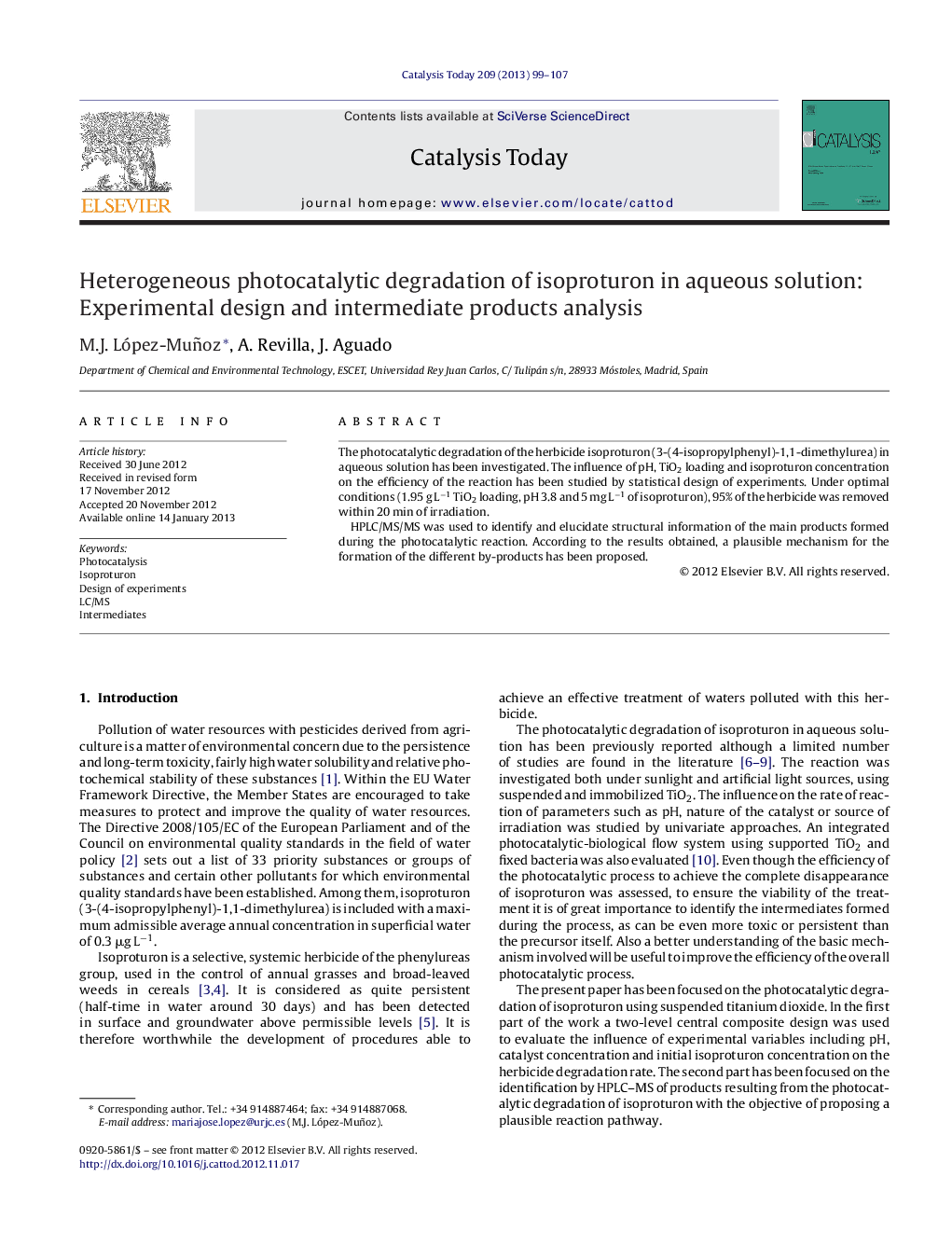| Article ID | Journal | Published Year | Pages | File Type |
|---|---|---|---|---|
| 55033 | Catalysis Today | 2013 | 9 Pages |
The photocatalytic degradation of the herbicide isoproturon (3-(4-isopropylphenyl)-1,1-dimethylurea) in aqueous solution has been investigated. The influence of pH, TiO2 loading and isoproturon concentration on the efficiency of the reaction has been studied by statistical design of experiments. Under optimal conditions (1.95 g L−1 TiO2 loading, pH 3.8 and 5 mg L−1 of isoproturon), 95% of the herbicide was removed within 20 min of irradiation.HPLC/MS/MS was used to identify and elucidate structural information of the main products formed during the photocatalytic reaction. According to the results obtained, a plausible mechanism for the formation of the different by-products has been proposed.
Graphical abstractFigure optionsDownload full-size imageDownload high-quality image (236 K)Download as PowerPoint slideHighlights► The herbicide isoproturon has been degraded in aqueous solution using TiO2 as photocatalyst. ► The influence of pH, TiO2 and isoproturon concentrations has been studied by statistical design of experiments. ► The intermediates formed during the photocatalytic reaction have been identified by LC–MS-TOF. ► A mechanism of isoproturon photocatalytic degradation has been proposed according to the results from MS and MS2 spectra.
